The Radeon Pro W5700 is quite frugal in idle with 12.8 watts, but the GeForce RTX 4000 is more frugal over 3 watts, which is somewhat in contradiction to AMD’s homepage, where only socket measurements are used, though. I measure the complete Board-Bower (TBP) on all four supply rails (3x 12V + 3.3 Volt) . With the D3D-Loop and about 99% GPU load the so-called GPU power is on average pretty much exactly at the 150 watts given by the power limit, which adds up to about 175 watts due to the remaining components and losses (about 25 watts). The Quadro RTX is internally strictly limited by BIOS to 125 watts and is therefore naturally only just below this mark.
As long as one designs in 2D/3D and fills the surfaces simply by shading, but doesn’t render and doesn’t run any animations in the loop, the power consumption of scarcely 84 watts can really be seen, because it is only scarcely over the RTX 4000. If one then however once final renders or runs a stress test, approx. 5 watts come with the Radeon Pro W5700 on the 175 watts of the D3D loop again on it, with the Quadro RTX 4000 it is scarcely 2 watts more. However, we must never forget that AMD’s TDP specifications refer to the GPU alone, while Nvidia’s TBP covers the entire board.
The load balancing on the rails turns out perfect, because in normal operation and at torture tests the maximum allowed 5.5 amps of the mainboard slot are never exceeded. The balancing is really well done here and the decision for 7 instead of 6 GPU phases is really exemplary and is on the very good level of the RX 5700 XT. With the RX 5700 with only 6 phases it was more than one ampere more in the load range.
Peak Loads
As I have already proved in detail in my basic article “The battle of graphics card against power supply – power consumption and load peaks demystified”, higher loads in the range of milliseconds do exist for a short time, which can lead to inexplicable shutdowns in the case of unfavorably designed or improperly equipped power supplies. In this case, the TBP (Typical Board Power) measured by the graphics card manufacturer or reviewers alone is not really helpful for a stable system design.
A short excerpt with higher resolution shows us now the 20 ms intervals, as I let them run automatically for value determination. Let’s compare the D3D-Loop with the continuous load during rendering…
… then we see very nicely the limitations of the arbitrator when it comes to not letting the absorbed power explode.
PSU Recommendation
Peaks with intervals between 10 and 20 ms can lead to shutdowns in very fast-reacting protective circuits (OPP, OCP), especially in multi-rail power supplies, although the average power consumption is still within the standard. For the Radeon Pro W5700, I would therefore calculate with 200 to 220 watts of the total power supply power for 12 volts, in order to have enough reserves for the worst case and to avoid triggering nervous protection circuits:
Detailled Curves for Power Consumption and Current
As usual, I now add the power consumption and flowing currents to the bar as detailed graphs of my oscillograph measurements. A service that hardly anyone else offers and which shows how the cards “tick” in detail:
AMD Radeon PRO W5700, 8GB GDDR6, 5x mDP, USB-C (100-506085)
 | Zentrallager: verfügbar, Lieferung 3-5 WerktageFiliale Wilhelmshaven: nicht lagerndStand: 19.04.24 04:52 | 233,92 €*Stand: 19.04.24 04:55 |
 | Sofort lieferbar | 233,93 €*Stand: 19.04.24 01:59 |
 | Lieferbar in 2-4 Tagen, Lieferzeit gesamt 4-9 Werktage | 237,00 €*Stand: 19.04.24 04:38 |
- 1 - Introduction, Unboxing, Technical Data
- 2 - Tear Down: PCB and Cooler
- 3 - SPECviewperf 13
- 4 - Creo 3
- 5 - Solidworks 2019
- 6 - Solidworks 2019 Enhanced Graphics
- 7 - 3ds Max 2015
- 8 - Inventor Pro 2020
- 9 - 2D Performance - GDI and GDI+
- 10 - Rendering and Compute
- 11 - Premiere Pro 2020 (v14) and HEVC
- 12 - Power Consumtion and PSU Recommendation
- 13 - Temperatures, Clock Rate, Infrarot
- 14 - Fan Speed and Noise
- 15 - Conclusion and Bottom Line















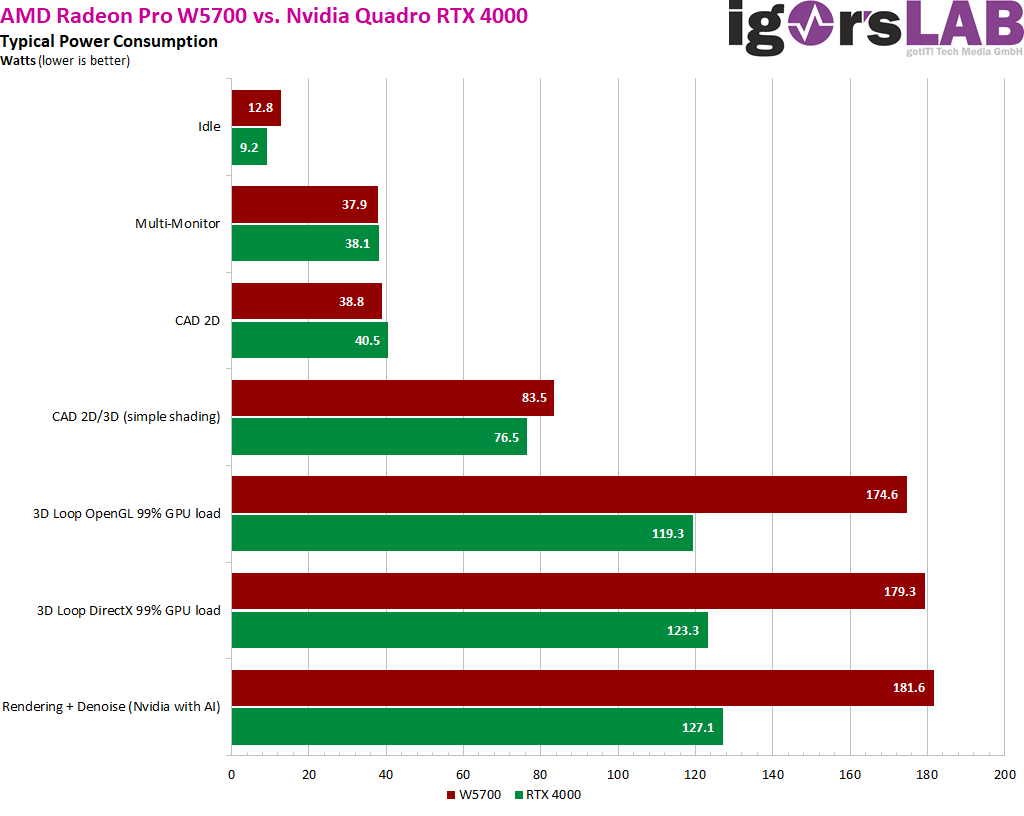
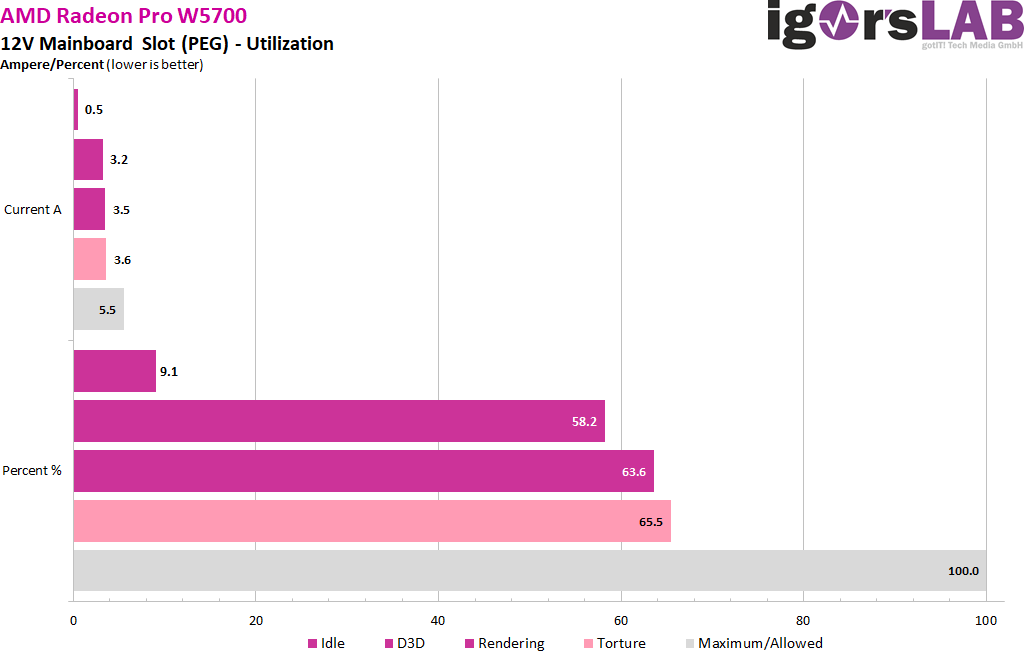
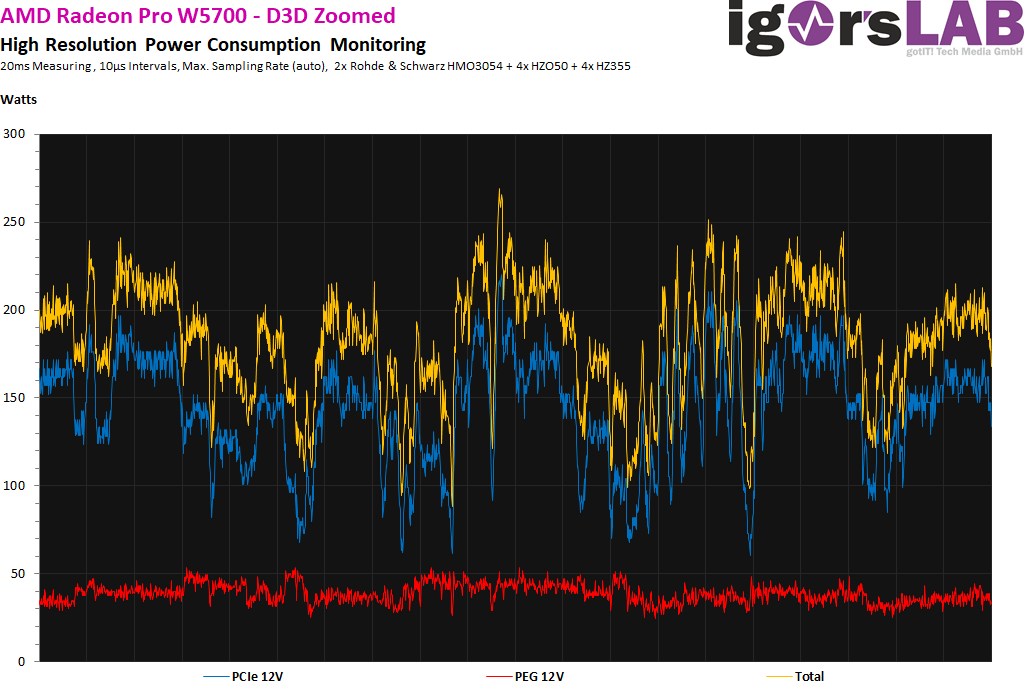
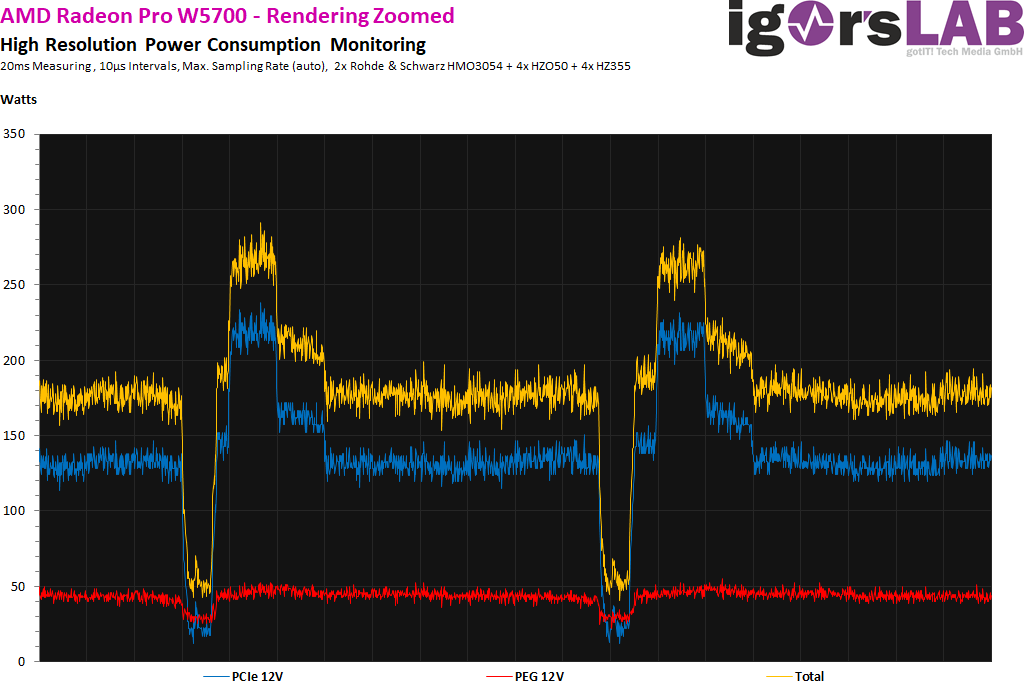
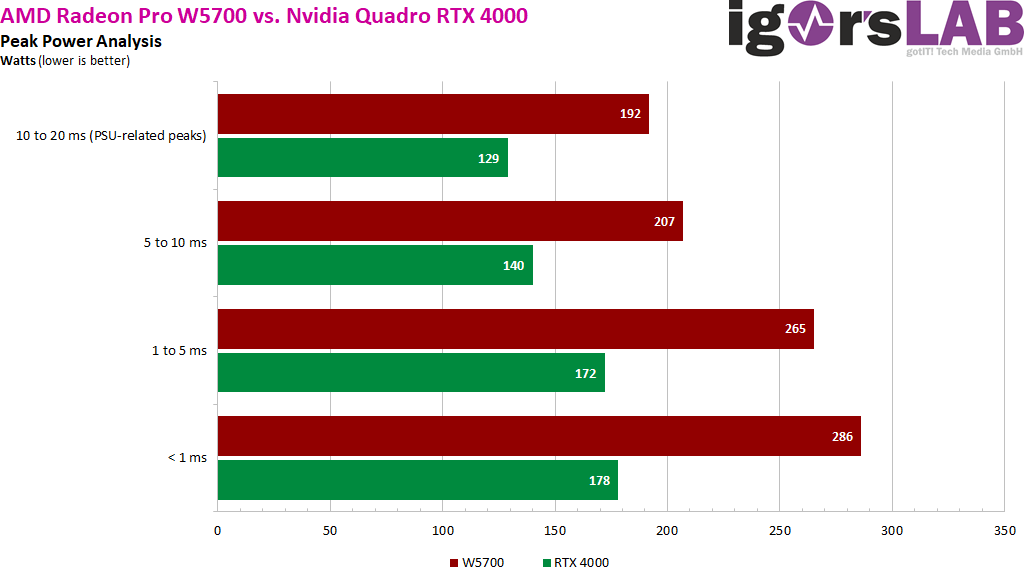
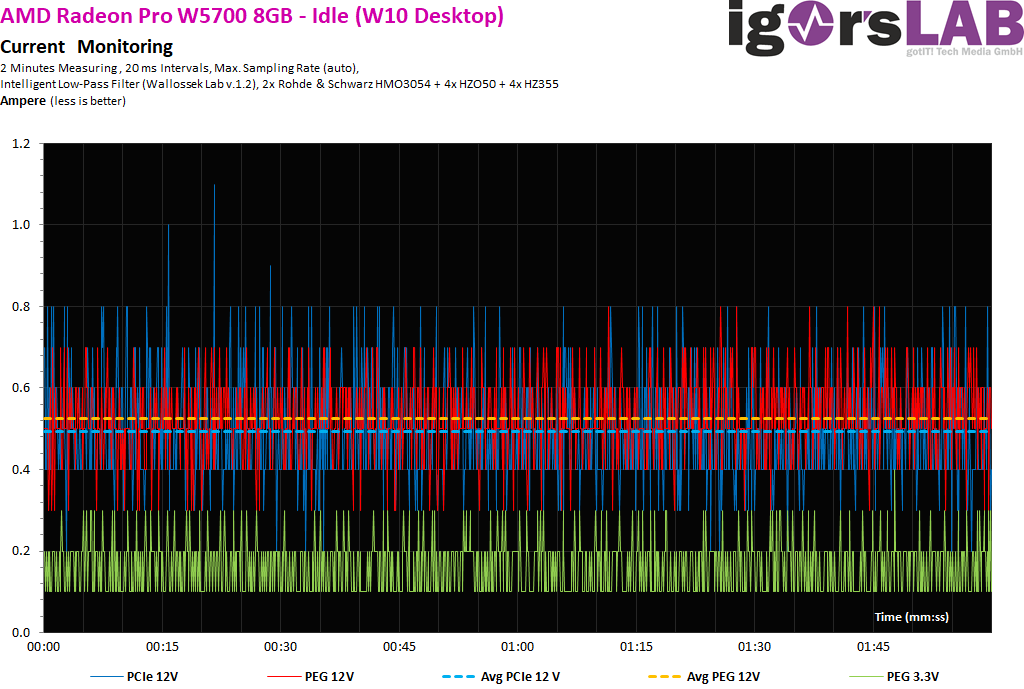



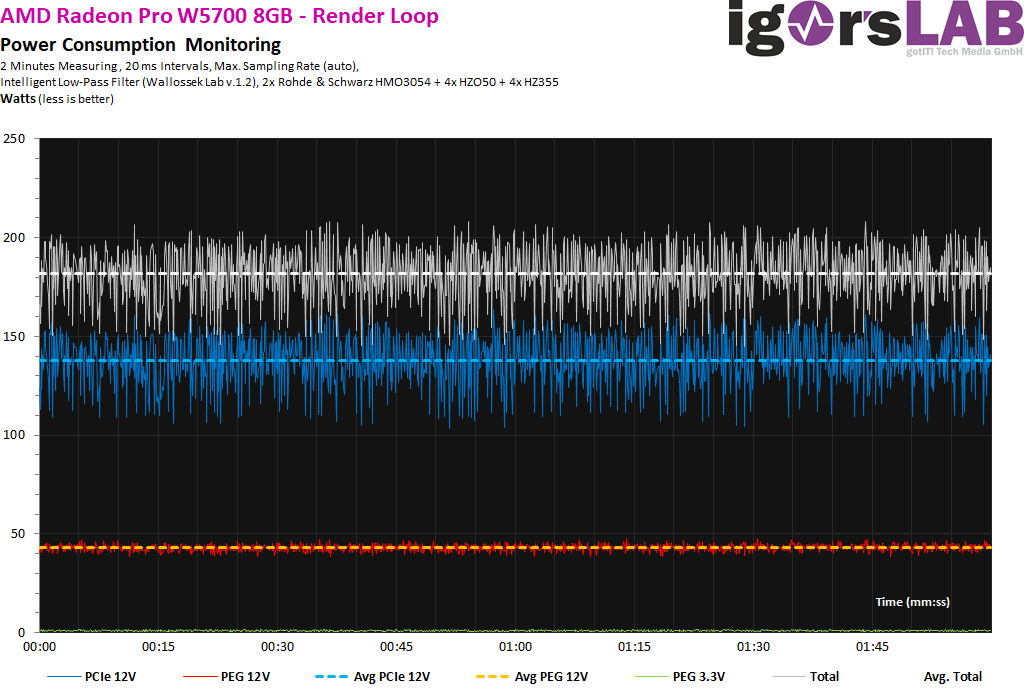


















Kommentieren